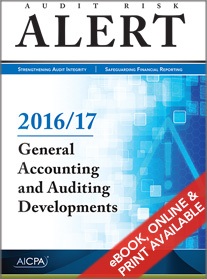Helpful comments from 2017 CalCPA Not-for-profit conference, part 1

Here are a few of the comments from the May 24, 2017 Not-for-profit conference presented by California Society of CPAs that I thought would be of interest to others in the nonprofit community. Since all comments are the opinion of the speaker, neither their name nor organization will be mentioned. The ideas mentioned can stand or fall on their own.
This is the first of two posts. The next discussion will address changes in financial statement presentation outlined in ASU 2016-14. In this post: tax, revenue recognition, and single audit.
(Cross-posted from my other blog, Nonprofit Update.)
Tax update:
- It might just be possible that filing a form 1023 or 1023-EZ is so easy that people can get exempt status for an organization without knowing the requirements to properly operate a charity and maintain exempt status. In examinations to follow-up on exempt status, the IRS is finding a lot of charities are out of compliance.
- One of several focuses of the IRS is filing of FBARs, those forms used to report overseas bank accounts. One ripple effect of chasing money laundering is the impact on charities who have overseas accounts. Even though there is minimal risk of those accounts being used for tax evasion the FBAR filing requirement still apply. As a reminder, the deadline for filing FBARs is now April 15 with a six-month extension available.
…
Helpful comments from 2017 CalCPA Not-for-profit conference, part 1Read More »













